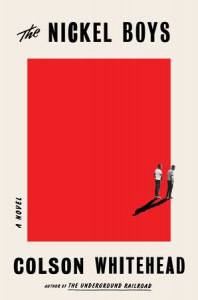The unfair, brutal history of reform schools comes to life.

Nickel Boys, Colson Whitehead, author; Bahni Turpin, narrator
Nickel Boys is based on a reform school, Arthur G. Dozier School for Boys, which truly existed in Florida. So, although this is a novel, a work of fiction, the terribly brutal behavior was common practice, the racism and the inequity, and the cruelty was real, and it leaps off the page.
The novel covers about 6 decades in the life of one of the characters, Elwood Curtis, who in the book is black, but in real life, the book is based on a white boy named Jerry Cooper who was running away from home. He was sent to the reform school in 1961, when he was just 16, because although he did not know it, he had hitchhiked in a car that the AWOL driver had stolen. The author has given Elwood, the main character of the novel, his experiences. Elwood was supposed to be on his way to college when he made the mistake of hitchhiking. He was arrested when the police pulled over the car and discovered it was stolen. He was sent to reform school, although he had no knowledge of the theft or the driver.
The effect of societal changes, including the integration of schools, barely influenced Nickel Academy. What went on at that school, knowing now that it went on in reality, will shock most readers. It should encourage them to explore the true story behind this novel. It is hard to believe that such a place with such practices could have existed without the outside world knowing or objecting. It is hard to believe that a justice system could mete out such injustice, without objection, but what happened to Elwood was a symptom of society’s illness. In the book it is a gross miscarriage of justice, made more critical because it was the same in the world of non-fiction. It is a story that cries out to be told in any form. The violence, torture and murder was obviously real as is evidenced by the presence of the bones in the graves of the former “students” that were unearthed there.
While the book is occasionally disjointed with a time line and locale that becomes confused, and with a surprise ending that was unexpected, the overall message is so important, it screams for it to be revealed in the light of day. There are some, possibly still alive, that were complicit because they had to have had knowledge of the existence of such heinous activity. One can only wonder how the evil that drove these men who participated in the grotesque behavior went undiscovered.
Because the message is so important, the quality of the writing, which has been criticized by some, and the lack of enough editing which has also been a concern, pales in importance when compared to the message, rarely aired, about this corrupt and evil school, just one of many that once existed. The history of such places is a scar on the history of the states in which they operated and American society.
If just a portion of what is written on these pages is true, it would be a monumental blight on the history of civil rights.


